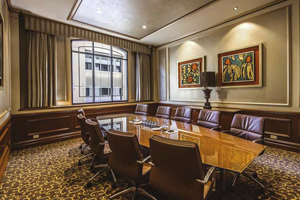
The modern de Medicis or just good investors?
Somebody stated that “if art kept by various companies were all collected in one museum, it would be the finest in the world.” So, which is the reason the companies buy art? It is because they are keen on supporting young artists? It is because supporting art is a good PR exercise? Or because art could be one of the best investments?
It is considered that the first corporate collection was formed during the Renaissance in 1472 by the Monte dei Paschi bank in Siena, a collection that survives and thrives to this day. Nowadays the corporate collections worth billions. UBS, Deutsche Bank and J.P. Morgan are often listed in Forbes’ best corporate art collections in 2012.
The largest corporate art collection in the world belongs to Deutsche Bank which began collecting in 1979 with the goal of supporting young and emerging German artists. The bank has grown exponentially since that time and the collection grew to 57,000 objects.
Liz Christensen, curator at Deutsche Bank, says “We’re not buying for investment. But we’re not buying for not investment.” She explains that this means they are not worrying about resale value when acquiring a work, but they do want to make smart purchases.
UBS owns 35,000 pieces of modern and contemporary art and mainly acquires works by relatively emerging and mid-career artists (therefore less expensive). UBS’ philosophy is “to be supporting living artists at integral stages of their career,” says Jacqueline Lewis, the bank’s curator for the Americas.
JPMorgan Chase has an important collection that traces back to David Rockefeller, the father of modern corporate collecting, who started an art acquisition program at Chase Manhattan Bank in 1959. Widely credited as the first high-profile executive to consult art historians, Rockefeller began the modern trend of using art for more than decoration. The collection started by Rockefeller has grown to 30,000 works, includes representative pieces of Andy Warhol and also collects works by lesser-known artists.
The countries where companies invest significantly in art collection are: the USA, Japan, Spain and Germany. Surprisingly, France and the UK are not on the top list. Some of the collections are managed by inside curators, others rely on outside advisers, some are largely open the public and others are only accessible to employees. Usually, the companies are not willing to disclose the value of their collections.
Author Peter Harris, a longtime advocate of the benefits of corporate art, state in his latest book “A celebration of corporate art programmes worldwide” that the reasons for corporate art collecting are many and various, but companies consider corporate art as a ‘win-win-win’ activity bringing benefits to all parties involved:
• The company wins because art in the workplace can boost staff morale and creativity. Art helps a company project it’s corporate identity in a memorable way, and the acquisition of high quality artwork establishes a company as a progressive organization, with a dynamic approach to business;
• The community wins – both locally and nationally – because it has alocal champion endorsing the cultural life of a region;
• The artist wins, because they attract commercial patronage and thus establish greater exposure and new audiences for their work.
Harris might be right about the win – win situation but, as the art is one of the best tickets to the minds of the elite, in not by chance that the top companies investing in art are the one who are targeting wealthy clients. As a result they double win: once in the eyes of the communities through supporting artists and once in the eyes of their wealthy clients.
And if we count the media coverage acquired in purchasing art, this could be considered a very wise investment: both in image and financially. Probably the companies investing in contemporary art claim, genuinely sometimes, that they support contemporary artists. But they also do a very thorough and careful consideration of their return of investment.









